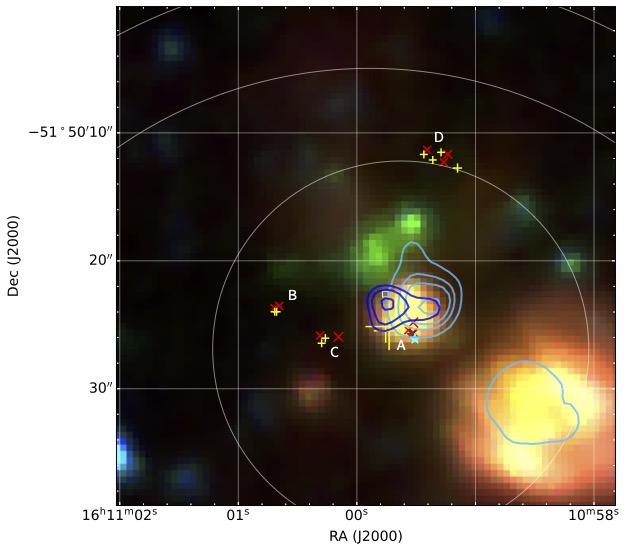Interferometric study of the class I methanol masers at 104.3 GHz

Methanol masers are common in the regions of high-mass star formation. Different transitions do not share the same behavior. The strongest dichotomy is between so called different classes of methanol masers: class I are pumped by collissions with molecular hydrogen and class II are pumped by infrared radiation. But within the same class masers tend to occur in series and the whole series of transitions share a great deal of common properties such as where they appear in a particular source or whether they can be detected at all. The 9.9 and 104 GHz class I methanol masers belong to the same series and are relatively rare with only 6 sources being known so far. The existing data at 104 GHz, were obtained with a number of different instruments and usually without an accurate position measurement. Moreover, the flux density ratios of these two masers of the same series were found to vary a lot. For example, in G331.13-0.24 shown in the figure above, the 104 GHz maser was not detected at all despite detectable 9.9 GHz maser and G305.21+0.21 shows the opposite scenario with very weak 9.9 GHz maser not detected in a regular survey. We carried out a systematic high-angular resolution observation of all these sources using the Australia Telescope Compact Array (ATCA) at 104 GHz. The comparison with the 9.9 GHz flux densities and the data on continuum suggests that the reason for the large variation of the flux density ratio could be the difference in the seed radiation for these two transitions depending on the position of the particular spot (e.g. in the plot above the 9.9 GHz maser marked by the star symbol is seen projected onto an HII region and offset from the 3mm continuum).